Page 109 of a 2002 book on rail posters, Travel by Train, says,
Out West, a coalition of nearly thirty railroads pooled their resources against the auto and introduced the “Travel by Train” campaign. Their cooperative effort produced nearly a dozen posters portraying a rand of national destinations. Most notable were New York’s Fifth Avenue by Fred Mizen and western landscapes by Denver artist H. M. Veenstra and Oscar Bryn.
This poster is not signed and the artist has not been identified. It is the only one of the seven that has a train in it. Click image to view a 1,323×2,017 JPG.
It is curious that a book named after this campaign says nothing more about the posters and, despite having mostly color portraits of 164 different rail posters, includes not a single one from this campaign. I don’t own any of these posters, but I’ve been able to track down images of seven of the series of “nearly a dozen.”
This poster is unsigned but credited to Oscar Bryn. Note the flat presentation of solid colors with little depth or grain. Though this is the only poster with a date, they all probably date from around 1934. Click image to view a 765×1200 JPG.
Oscar Bryn, who did the above poster, did most of his rail work for the Santa Fe. Although born in Honolulu, he grew up and was educated in the San Francisco Bay Area and, after other jobs, began working for the Santa Fe in 1910, continuing to work for the railroad as well as other clients until 1950. Given his familiarity with the Southwest, it is surprising that his poster is for the Pacific Northwest.
This poster is signed H. M. Veenstra. Like Bryn’s it is also flattened. Though this is the only poster with a date, they all probably date from around 1934. Click image to view a 765×1200 JPG.
Little is known about H. M. Veenstra except that he was a Denver artist who painted Colorado mountain scenery. Most of his paintings had much more depth than his flattened portrayal of the Colorado Rockies used in this poster.
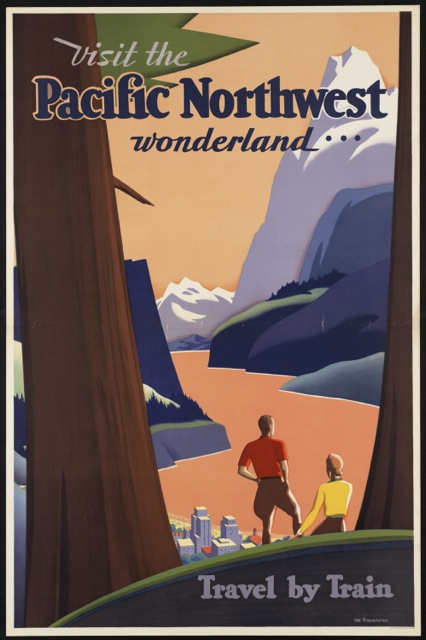
This poster is signed “The Willmarths,” meaning Kenneth and William Willmarth. The fact that it represents the Pacific Northwest make it especially surprising that Bryn’s poster also advertises the Northwest. Click image to view a 998×1500 JPG.
Kenneth and William Willmarth were brothers who kept a studio in Omaha, near the headquarters of the Union Pacific, which naturally was one of their biggest clients. They were the only artists I know of to contribute two posters to the series, and it is not surprising that one of them represented the Pacific Northwest.
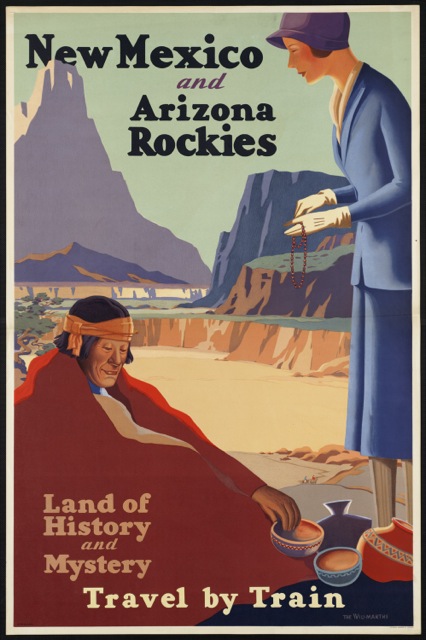 Click image to download a 998×1500 JPG.
Click image to download a 998×1500 JPG.
Except for having a hotel on the North Rim of the Grand Canyon, the Union Pacific didn’t serve Arizona or New Mexico, so it is surprising that the poster for that region was done by the Willmarths and not Oscar Bryn.
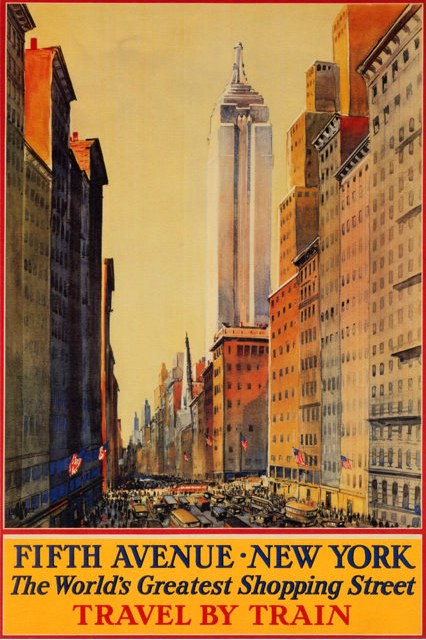 Click image to download a 1024×1536 JPG.
Click image to download a 1024×1536 JPG.
Web images of the poster of Fifth Avenue, by Frederic Mizen, have an inconsistent color range: while the above image has a yellow sky, others have a blue or bluish-yellow sky. In any case, Mizen was another artist who did a lot of work for the Santa Fe; several of his paintings appeared on Santa Fe calendars in the 1950s and 1960s.
The artist who did the California poster is unknown. Click image to view a 994×1,500 JPG.
It is curious that Bryn, Veenstra, and the Willmarths all chose to use a flat style of painting while Mizen and the two unknown artists included more depth in their works. Was this flat style a particular fad of the day or were they asked to keep their paintings flat to somehow reduce printing costs? What are the missing posters, and what artists painted them?
Of the major railroads, the Illinois Central, New Haven, New York Central, Northern Pacific, and Pennsylvania all produced a large number of posters. Did any of their artists contribute to the series? I don’t know the answers to these questions, but I have collected images of posters by Bryn, Mizen, and the Willmarths, as well as other rail poster artists, that I’ll present in future posts.
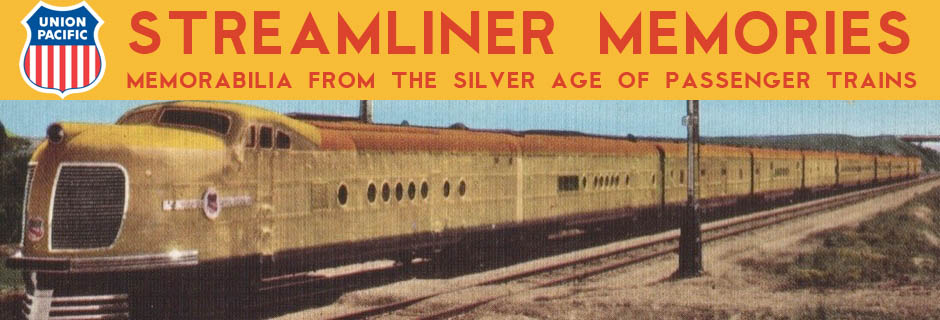
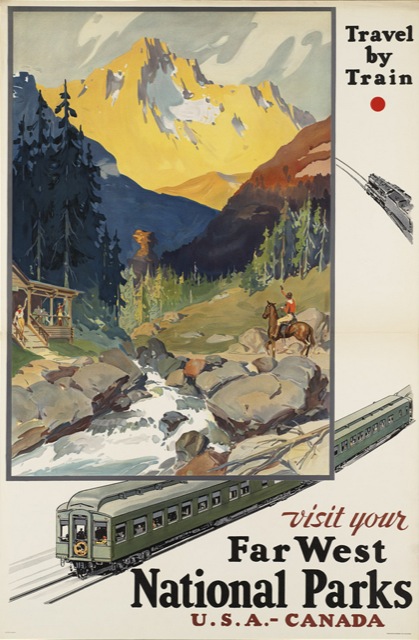
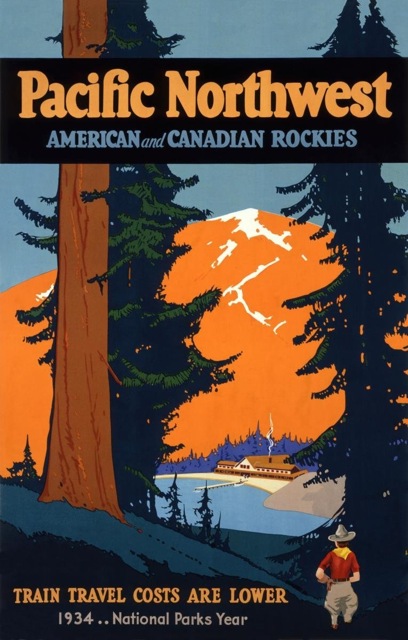
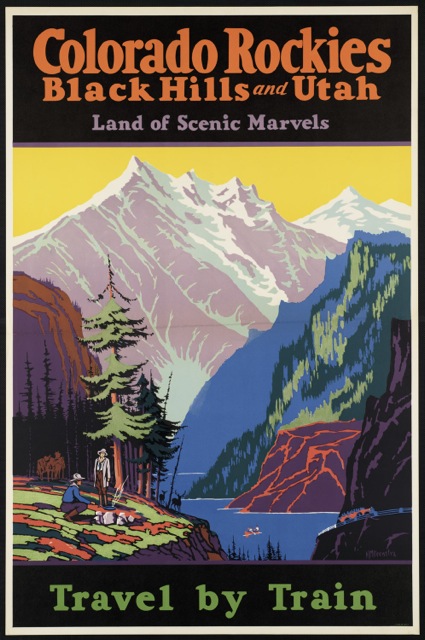
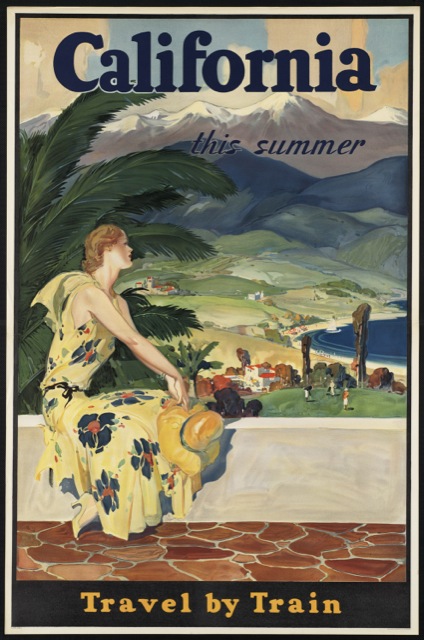
I have or had most of the posters from your Apr 1 posting. Found them in my attic (110 year old house). Originals.
Hello,
My wife and I love several of the poster’s on your website. We would like to get a copy of the Pacific Northwest American & Canadian Rockies – Train Travel Costs are Lower 1934 – National Parks Year Oscar Bryn and others. How can we purchase these images?
Please email reply to dlstarkel@msn.com